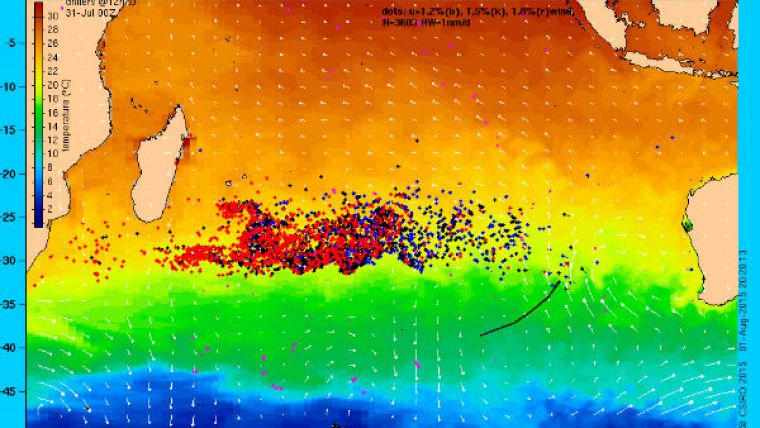Discovery of MH370 Part Confirms Ocean Current Models
A part from the MH370 aeroplane feared lost in the Indian Ocean on 8 March 2014 was found recently on the island of La Réunion. According to the Australian Transport Safety Bureau (ATSB) which is leading the search, this is consistent with the current underwater search area in the southern Indian Ocean where exhaustive analysis has concluded the aircraft entered the water.
Drift modelling by CSIRO shows that material from the current search area could have been carried to La Réunion, among other locations.
There has been more material handed over to the French police on La Réunion. However they appear not to originate from an aircraft. Nevertheless, people finding materials are encouraged to report them to the local police. The drift modelling indicates that if there is any more floating debris from MH370, it could be anywhere in hundreds of thousands of square kilometres in the Indian Ocean.
Consistent with Defined Search Area
The discovery of the flaperon is consistent with the search area ATSB is focusing on and they will continue to search this area thoroughly expecting to find the missing aircraft. The organisation is using satellite information and aircraft performance information to define the search area which have been tested and proved as reliable.
Image: Indication of the drift area. Blue, black and red dots simulate items with leeway factors (applied to the 10m wind velocity) of 1.2, 1.5 and 1.8%. Image courtesy: CSIRO.
Below, a video animation of the drift modelling undertaken by CSIRO as published by the ATSB.














